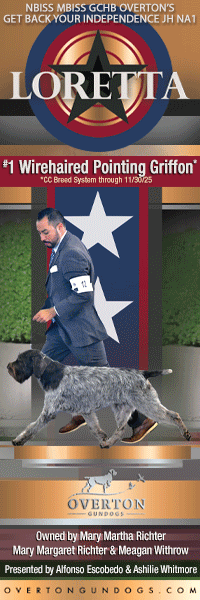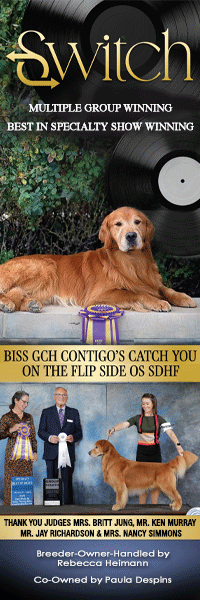Nordic Herding Dogs
Click here to read the complete article
298 – November/December, 2014
By Amy Fernandez
Recent additions to the AKC studbook are collectively regarded as “new” breeds. From the perspective of American fanciers, that’s true. Among the latest arrivals, the Finnish Lapphund debuted in 2011. The Icelandic Sheepdog entered the ranks in 2010 and the Norwegian Buhund in 2009. Although they qualify as newcomers to the Herding Group, it’s been a long strange trip for all three of these ancient Nordic breeds.
For 300 years, Vikings ventured across the globe as far as skill and luck would take them. Their pattern of plunder, trade, and assimilation fomented an unprecedented culture clash. Norse technology and customs reshaped the known world, and definitely reset the dial for European breed development. Despite their fearsome warrior image, animal husbandry was the mainstay of Viking life. Dogs protected and managed their livestock, guarded homesteads, and hunted both large and small game. In other words, they did the same essential jobs they have performed throughout the world since the human/canine partnership began. However, Scandinavia’s demanding environment forged a canine strain to match the hardiness and resourcefulness of their human counterparts.
The Norwegian Buhund was purpose-built. Before and since the Viking Age, it functioned as Scandinavia’s ubiquitous farm dog. Its name derives from the Norwegian ‘bu’ denoting both livestock and homestead and ‘hund’ (no translation necessary). Although the Buhund’s traditional role has diminished substantially, its innate working drive cannot be suppressed. Those instincts have been successfully redirected into new pursuits as a companion, show dog, and performance competitor. Buhunds have also flourished as assistance and sentry dogs. Its responsiveness and tracking aptitude has also made it an ideal candidate for search and rescue work. This transition into the purebred world is a recent wrinkle in its history. The Buhund was virtually unknown outside its homeland until the 1920s when Norway’s state counsel, and Buhund fancier, John Saeland, orchestrated its debut in the modern dog world. Beginning in 1926, he promoted Buhund exhibitions in conjunction with livestock fairs and organized documented breeding programs. In 1939 he founded an official studbook and national club, the Norsk Buhundklubb. Its first president, Toralf Raanaas, was equally dedicated to repurposing the Buhund for the twentieth century.
The first Buhunds arrived in England in 1946, a pregnant bitch and an unrelated dog. Her litter of seven provided the basis for several British bloodlines. A second dog arrived in 1953 and an additional three dogs by 1968 when the Kennel Club accepted the breed, granting its first CC’s in 1970. The first two British champions were crowned within a year. The breed was FCI recognized in 1963, and soon attracted interest throughout Europe. A slower pace characterized the Buhund’s progress in the U.S. The Norwegian Buhund Club of America was founded in 1983. It entered the AKC FSS program in 1996, transitioned to the Miscellaneous Class in January, 2007, and became AKC’s 160th breed when it joined the Herding Group in 2009.
For more information about the
Norwegian Buhund visit www.buhund.org
Notorious guerilla raids remain the linchpin of enduring fascination with Viking culture. In reality, their primary motivation was a search for new land. Those legendary longboats were frequently followed by big, wide, far less glamorous cargo ships laden with settlers, livestock, and supplies. For 300 years dogs were major players in both phases of Viking expansion. Consequently, they introduced new strains of canine DNA to far-flung populations on four continents. Iceland was among the earliest recipients. In contrast to most of the sketchy accounts of Viking activities, Iceland is nailed down in the history books.
The most comprehensive source of information regarding Viking culture is found in the Icelandic Sagas. A mix of myth and history, these ancient accounts detail Icelandic colonization by Viking settlers from Norway and Britain. Like every other human migration, dogs came along for the ride. Iceland contributed to survival, economic prosperity, recreation, and it provided the genetic foundation for hunting and herding dogs, most notably the Icie. Iceland’s only indigenous breed has been variously known as the Islenskur Fjárhund, Islandsk Farehond, or Icelandic Spitz. Its ancestors arrived between AD 874–930 and the combined influences of environment and geographic isolation forged a breed that became celebrated for its independent spirit, determination, resilience, and razor sharp senses.
Iceland remains Europe’s most sparsely populated country. Throughout its history settlements have never expanded far beyond Reykajavik. Much of the island offers an uninviting confection of mountains, glaciers, fjords, active volcanoes, and lava fields, which ensured nonstop challenges for inhabitants. Although resources were plentiful for Iceland’s early settlers, they dwindled as the population grew. According to archeological estimates, all of Iceland’s prime land was utilized in less than a century. Subsequent generations of dogs and humans adjusted to these limitations. Fishing and farming remained the economic mainstays and hardship remained the major theme of life until the 20th century. Like their owners, Icelandic Sheepdogs evolved as tough determined survivalists.
Customized for its job, back in 900 AD, the Icie devoted itself to herding and driving livestock, and finding lost sheep (and occasional wayward hmans). Its inherent directional sense and uncanny ability to identify its charges became legendary. Reportedly, a well-trained Icie was comparable to the value of a horse and two sheep.
Conflicting theories abound regarding the origin of Iceland’s first settlers. But there is no question that Vikings from Norway introduced the first domestic animals. That was confirmed in 1983 when DNA testing of 56 Icelandic Sheepdogs traced the breed to Norway via eastern Russia. Considered an ancestor of the Sheltie and Corgi, its genetic link to the Buhund, Jamthund, and Laika is also clearly evident.
Historical references suggest that the Icie was acknowledged as a distinct breed by the 1500s. However, definitive sources don’t confirm its existence until the late 1700s. Most notably, the Swedish naturalist, Linnaeus, classified all known breeds in 1756 as part of his Systema Naturae. However, dogs received only minor attention in this groundbreaking work, which may explain odd inclusions like “weasel colored dogs” as well as the omission of native Scandinavian breeds, including the Icelandic Sheepdog. Linnaeus did, however, document the breed in his 1792 revised edition to this blockbuster. In between, the French naturalist, Count de Buffon, began publishing his ambitious 44 volume catalog of the natural world in 1755. He hadn’t quite finished in 1788 when he died, but the Icelandic Sheepdog ranked among the 19 breeds to receive his official acknowledgment, an endorsement that far surpassed the prestige of AKC recognition back then.
After a long run of success, the breed’s population began to dwindle in the 18th century due to a combination of natural disasters, disease epidemics, and the cumulative impact of 37 famines. Distemper subsequently destroyed 75 percent of Iceland’s canine population. It was estimated to be approximately 24,000 in 1869 when the government imposed an exorbitant dog tax. Although it proved ineffective as a disease control measure, canine numbers plummeted to 10,000 within two decades. The ensuing dog shortage prompted the importation of foreign breeds, which also negatively impacted the Icie by diluting its gene pool. The next bureaucratic brainstorm, in 1901, banned all livestock importations, including dogs. That was followed by even more restrictive legislation in 1924, which outlawed dog ownership in Reykjavik. By then, the Icelandic Sheepdog bordered on extinction.
An Englishman, Mark Watson, is credited with turning the tide of Icie fortunes. Watson had traveled extensively in Iceland from the 1930s to the ‘70s. Early in his travels he found the breed to be prevalent in rural areas. However, by 1950, he found only a tiny purebred population clustered around Breiðdalur. A decade later, less than 35 remained. Unlike native Icelanders, this precipitous decline spurred him into action.
For more information about Icelandic Sheepdogs
visit www.icelanddogs.com
With the assistance of Iceland’s chief veterinary officer, Páll A. Pálsson, Watson located 23 purebred specimens on remote farms and exported several of them to California to found a breeding program. Luckily, Pálsson kept one of the bitches, because soon after they arrived in America, several of Watson’s dogs succumbed to distemper. The survivors became the foundation of his Wensum breeding program, which he continued after relocating to England. At that point, the breed began attracting English fanciers who also initiated breeding programs. Concurrently, Pálsson bred his female as part of a conservation effort funded by Iceland’s Ministry of Agriculture. All of this activity on the breed’s behalf successfully awakened Icelanders to the plight of their beloved national breed. Some were prompted to establish their own breeding programs, most notably Sigríður Pétursdóttir who founded her fra Olafsvóllur breeding program in 1967.
Working with Páll A. Pálsson, she incorporated 14 of the remaining purebred Icies into formally documented breeding and later imported additional stock from Watson and other English breeders. In 1969 she was instrumental in organizing the Icelandic Kennel Club (HRFI) and helped to write the breed’s first standard, and an Icelandic national club was established in 1979. Despite these efforts, the Icelandic government remained indifferent to the plight of this native breed, although their lobbying elicited assistance from the Nordic Kennel Union and a major player in FCI, the Raad van Beheer in Holland. This was not unusual. Typically, interest in the breed came from outside Iceland. For instance, the breed was first exhibited in 1897 at the Tivoli Gardens show in Copenhagen. A year later, it was recognized in Denmark.
The Kennel Club documented its first Icelandic Sheepdog in 1905 and subsequently published an English translation of the Danish standard. Over the next decades, the breed attracted fans in several FCI countries, but never gained substantial support in England even though Icelandic Sheepdog classes were offered at shows in 1923 and 1925. The first FCI standard was published in 1972, placing it in the Spitz and Primitive group designated as a Nordic watchdog and herder. The formation of the Icelandic Sheepdog International Cooperation (ISIC) in 1996 signaled a crucial development in the breed’s ongoing viability. The organization promotes the breed with a focus on international cooperation among breeders. Currently, its membership includes Iceland, Sweden, Denmark, Norway, the Netherlands, Finland, Germany, Switzerland, and AKC parent club, the Icelandic Sheepdog Association of America.
It was accepted into the Herding Group in June, 2010, but interest in the breed remains centered in Scandinavia and northern Europe, although its population has soared from its all-time low of less than 35 individuals. Currently estimated at 5000 worldwide, extinction has ceased to be an imminent danger. For additional information visit www.icelanddogs.com
The Finnish Lapphund entered the Herding Group in 2011. Known as the Suomenlapinkoira or Finnish Reindeer Dog in its native land, the Lappie has blossomed in its new niche as a companion animal. Today, it ranks as Finland’s sixth most popular breed, earning accolades in a wide range of competitive events like agility, obedience, rally flyball, tracking, herding, carting, and mushing.
Long before that, the Lappie was indispensable as a watchdog and reindeer herder. Like its cousins, the Lapponian Herder and Swedish Lapphund, centuries of work and environmental pressures honed it to this role. The breed evolved in concert with the lifestyle of the semi-nomadic Saami tribes that have inhabited arctic and subarctic Scandinavia for at least 5000 years. Their survival strategy utilized various combinations of hunting, fishing, trapping, and herding – for which they are best known. Like most European groups, they raised sheep, but the Saami became famous for a truly unique innovation in animal husbandry, they devised a method to semi-domesticate and herd reindeer.
Although isolation has characterized Saami history, linguistic evidence reveals that contact with other European cultures commenced least 4000 years ago. Roman historians described them as semi-nomadic reindeer hunters. The first evidence of a groundbreaking shift in their subsistence practices from hunting to domesticating reindeer emerges in the late eighth century. Chronicles of the Saxon King Alfred (849-899) detailed the Saami custom of utilizing trained decoys to capture wild reindeer. Semi-domesticated, reindeer could be milked and used for transport. However, they did not breed in captivity.
The role of the Lapphund changed as reindeer hunting was gradually transformed into reindeer husbandry. The Lappie was essential to this labor intensive job of tending and following a family’s free roaming herd. For centuries, herders relied on their dogs to help them gather herds and track their migrations. Seasonal migrations between summer and winter pastureland involved a journey of approximately 250 miles. It would have been nearly impossible without these alert, inexhaustible dogs. Despite its challenges, the value of this innovation was illustrated by its spread throughout Scandinavia and into nine countries. The Lapphund became irrevocably linked to traditional Reindeer pastoralism. It was among the few breeds included in Buffon’s gargantuan 1789 catalog of the natural world, confirming its renown by that time.
Obsolescence has been the fate of countless traditional working breeds, and the Lappie wasn’t spared. Unpredictable factors constantly challenge pastoral lifestyles but environmental hurdles were not the only dangers facing this ancient breed. In the 1960s many herders began utilizing new technology like snowmobiles, motorcycles, and helicopters to track and follow their herds. Not only did this require fewer dogs, the leggier Lapponian Herder was better suited to the job.
A far greater menace to the Lappie’s existence was the systematic marginalization of Saami culture. With an estimated population of 70,000 to 100,000, Saami tribes have never fit conventional definitions of a cohesive nation. Their multiple languages and dialects, eclectic religious beliefs, and varied occupations contradicted rigid notions of cultural identity markers.
First and foremost, they have never been linked to a defined geographic homeland. Traditional Saami territory encompassed more than 150,000 square miles and long predated the formal boundaries that later delineated the boundaries of Russia, Finland, Sweden, and Norway. Long-established Saami migration routes often crossed several national borders into countries that claimed sovereignty over their ancestral pastureland. The Saami not only found themselves trespassing, legal restrictions criminalized many of their normal activities like hunting, trapping, and fishing. As their land was appropriated for livestock, they lost access to essential resources and faced new disease threats, including distemper. The draconian social and political policies that undermined their pastoral lifestyle have only recently begun to change. Legislation to protect and preserve their cultural heritage and traditional activities like reindeer herding were first implemented in 1989.
Luckily, the Lappie’s plight was recognized earlier. In Finland, efforts to save the breed commenced in 1940. Saami dogs became the basis for conservation breeding programs. In 1945 the Finnish Kennel Club recognized both the longcoated Finnish Lapphund and shorter coated Lapponian Herder collectively as the Kukonharjunlainen, or Lappish Herder. FCI also accepted them as a single breed in 1955, finally granting separate status to the Lapponian Herder as the Lapinporokoira a decade later. The Finnish Lapphund was officially renamed the Suomenlapinkoira one year later.

The Finnish parent club was founded in 1970, and the international dog world began taking an interest in the Lappie. It was introduced into Great Britain in 1989 and imported into Australia and Canada in 1995. Although it remains rare outside of Scandinavia, it now ranks as Finland’s sixth most popular breed.
Lappies arrived here in 1987 and America’s first litter was whelped a year later. UKC recognized the breed in 1994, but AKC was true to form, being one of the last major registries to accept it. It entered the AKC FSS in 2001, transitioned to the Miscellaneous Class in 2009, and finally took its rightful place in the Herding Group in 2011.
For additional information about the Finnish Lapphund please visit the parent club website at
www.finnishlapphundclubofamerica.org
Redefining traditional working dogs as purebreds is always controversial. These are far from the only breeds that have engendered staunch opinions on both sides of that issue. The process is inevitably complicated by unanticipated pitfalls and dire predictions for the breed’s future. And its future is the bottom line. AKC recognition won’t solve everything, but it has provided a powerful international platform to showcase these breeds to legions of potential fans.
Short URL: http://caninechronicle.com/?p=64350
Comments are closed












